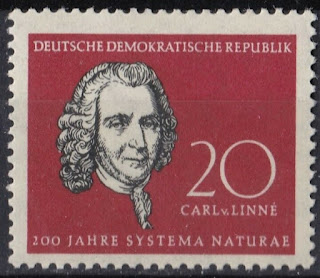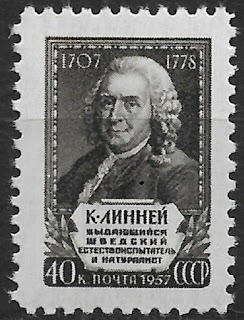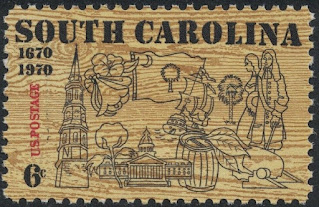Here are some events that happened on May 23rd. It could be an event or a person that died or was born on that day
1707 Born: Carl Linnaeus, Swedish botanist, physician, and zoologist (d. 1778)
Carl Linnaeus (23 May 1707 – 10 January 1778), also known after his ennoblement as Carl von Linné, was a Swedish botanist, zoologist, and physician who formalised binomial nomenclature, the modern system of naming organisms. He is known as the "father of modern taxonomy". Many of his writings were in Latin, and his name is rendered in Latin as Carolus Linnæus (after 1761 Carolus a Linné).
Linnaeus was born in the countryside of Småland in southern Sweden. He received most of his higher education at Uppsala University and began giving lectures in botany there in 1730. He lived abroad between 1735 and 1738, where he studied and also published the first edition of his Systema Naturae in the Netherlands. He then returned to Sweden where he became professor of medicine and botany at Uppsala. In the 1740s, he was sent on several journeys through Sweden to find and classify plants and animals. In the 1750s and 1760s, he continued to collect and classify animals, plants, and minerals, while publishing several volumes. He was one of the most acclaimed scientists in Europe at the time of his death.
Philosopher Jean-Jacques Rousseau sent him the message: "Tell him I know no greater man on earth." Johann Wolfgang von Goethe wrote: "With the exception of Shakespeare and Spinoza, I know no one among the no longer living who has influenced me more strongly." Swedish author August Strindberg wrote: "Linnaeus was in reality a poet who happened to become a naturalist." Linnaeus has been called Princeps botanicorum (Prince of Botanists) and "The Pliny of the North". He is also considered as one of the founders of modern ecology.
In botany and zoology, the abbreviation L. is used to indicate Linnaeus as the authority for a species' name. In older publications, the abbreviation "Linn." is found. Linnaeus's remains comprise the type specimen for the species Homo sapiens following the International Code of Zoological Nomenclature, since the sole specimen that he is known to have examined was himself.
Russian and East German stamps depicting Linnaeus
1788 – South Carolina ratifies the United States Constitution as the eighth American state.
South Carolina (/ˌkærəˈlaɪnə/ (About this soundlisten)) is a state in the Southeastern region of the United States. It is bordered to the north by North Carolina, to the southeast by the Atlantic Ocean, and to the southwest by Georgia across the Savannah River. South Carolina is the 40th most extensive and 23rd most populous U.S. state. In 2019 its GDP was $213.45 billion. South Carolina is composed of 46 counties. The capital is Columbia with a population of 133,273 in 2019; while its largest city is Charleston with a 2019 population of 135,257. The Greenville–Anderson–Mauldin metropolitan area is the largest in the state, with a 2018 population estimate of 906,626.
South Carolina was named in honor of King Charles I of England, who first formed the English colony, with Carolus being Latin for "Charles". South Carolina became the eighth state to ratify the U.S. Constitution on May 23, 1788. It also became the first state to vote in favor of secession from the Union on December 20, 1860. After the American Civil War, it was readmitted into the United States on June 25, 1868.
US stamps depicting South Carolina
1848 Born: Otto Lilienthal, German pilot and engineer (d. 1896)
Karl Wilhelm Otto Lilienthal (23 May 1848 – 10 August 1896) was a German pioneer of aviation who became known as the "flying man". He was the first person to make well-documented, repeated, successful flights with gliders. Newspapers and magazines published photographs of Lilienthal gliding, favorably influencing public and scientific opinion about the possibility of flying machines becoming practical. On 9 August 1896, his glider stalled and he was unable to regain control. Falling from about 15 m (50 ft), he broke his neck and died the next day.
Lilienthal's greatest contribution was in the development of heavier-than-air flight. He made his flights from an artificial hill he built near Berlin and from natural hills, especially in the Rhinow region.
The filing of a U.S. Patent in 1894 by Lilienthal directed pilots to grip the "bar" for carrying and flying the hang glider. The A-frame of Percy Pilcher and Lilienthal echoes in today's control frame for hang gliders and ultralight aircraft. Working in conjunction with his brother Gustav, Lilienthal made over 2,000 flights in gliders of his design starting in 1891 with his first glider version, the Derwitzer, until his death in a gliding crash in 1896. His total flying time was five hours.
At the beginning, in 1891, Lilienthal succeeded with jumps and flights covering a distance of about 25 meters (82 ft). He could use the updraft of a 10 m/s wind against a hill to remain stationary with respect to the ground, shouting to a photographer on the ground to maneuver into the best position for a photo. In 1893, in the Rhinow Hills, he was able to achieve flight distances as long as 250 meters (820 ft). This record remained unbeaten for him or anyone else at the time of his death.
Lilienthal did research in accurately describing the flight of birds, especially storks, and used polar diagrams for describing the aerodynamics of their wings. He made many experiments in an attempt to gather reliable aeronautical data.
German stamps depicting Otto Lilienthal






No comments:
Post a Comment